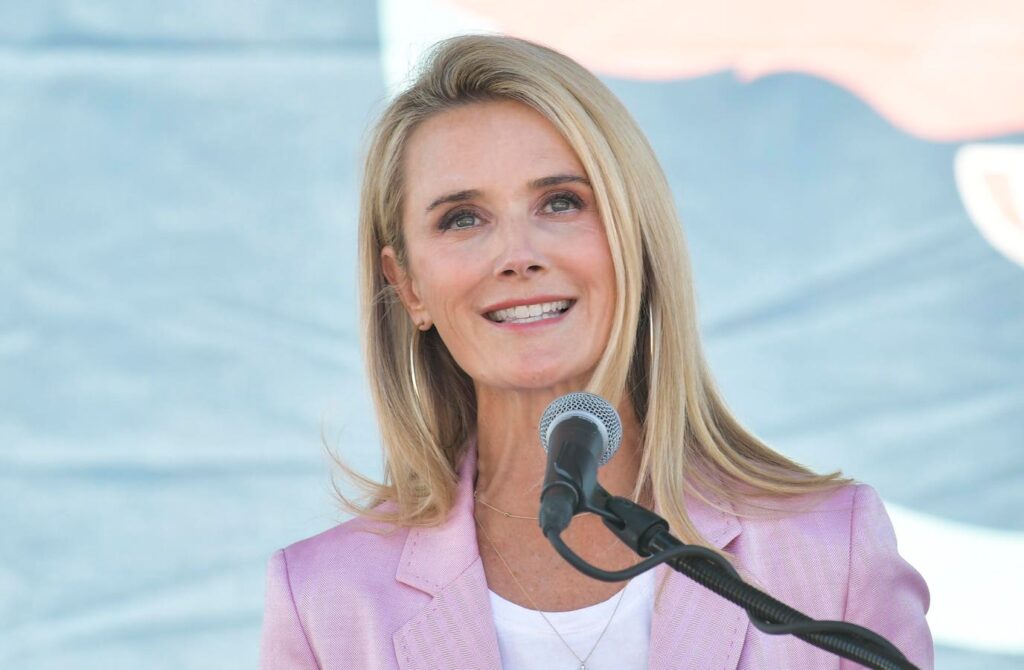First Partner of California, Jennifer Siebel Newsom announces a playbook on how to reduce the gender … [+]
WireImageFirst Partner of California Jennifer Siebel Newsom unveiled a six-step playbook to help guide companies that are hoping to eliminate their internal gender wage gap. In a further boost to gender equality, she revealed that the list of organizations committing to the California Equal Pay Pledge has grown to over 200 organizations—more than double the number from 2023. Together, these efforts underscore a significant drive to reduce California’s wage gap that costs the state’s women an estimated $87 billion annually.
“We’re trying to turn the California pay gap into the smallest pay gap in the nation,” Siebel Newsom told me at Yahoo’s MAKERS Conference last month. California currently ranks eleventh in the nation when it comes to eliminating the pay gap. Women in the state earn only 81 cents for every dollar earned by a man, and women of color do significantly worse. Latinas earn 44 cents for every dollar white men earn, and Black women earn only 58 cents.
Launched in 2019 to help women receive fair wages, California’s Equal Pay Pledge requires signers to commit to conducting an annual company-wide gender pay analysis and reviewing their hiring and promotion processes. With tech giants like Apple, Intel, and Airbnb already on board, the initiative has now expanded to include 208 companies committed to fostering pay equity.
Despite the growing number of businesses signing the pledge, several of the largest California-based corporations, including Meta, Alphabet, and Disney, remain absent from the list. Currently, Disney is grappling with a class action lawsuit from thousands of women who claim they were paid less than men who held the same job description. And, in 2022, Alphabet’s Google settled a gender discrimination lawsuit, agreeing to pay $118 million to over 15,000 women. These companies did not respond to a request for comment on their lack of participation.
The Equal Pay Playbook, developed by the First Partner and the California Partners Project and released today, was designed to help California companies achieve their equal pay objectives. At a press conference announcing the playbook, the First Partner said she wanted to “take excuses off of the table and make it super easy for employers to do their part to create a more equitable workplace and society.”
“I feel like we’re at a time in society where the private sector has to stand up and partner with government and really be the better angels of their nature,” Siebel Newsom told me. The playbook provides clear step-by-step instructions for companies that want to learn how to review their pay. “I think sometimes, it’s a little scary taking those first steps,” she added.
Steps to Equal Pay
One of the first steps recommended to companies aiming for equal pay is securing the backing of top leadership. The playbook also recommends developing a compensation philosophy, essentially a mission statement for pay that ensures decisions on compensation are both fair and consistent with the organization’s broader objectives.
Organizations then must standardize job titles and wage structures to ensure that employees’ pay can be accurately compared. The more precise the job descriptions, the better the gender comparison will be.
“Rather than just looking at groupings of jobs based on the market value for them, we looked at each job and level in isolation,” Arriada-Keipe, vice president of Global Rewards at Adobe, one of the signers of the Equal Pay Pledge, reported in the playbook. The software company considered location, seniority level, and specialization within each job category to establish pay for each position.
Once jobs are standardized, organizations need to conduct thorough evaluations to identify any wage discrepancies. Larger organizations may need to perform complex statistical analyses to uncover these disparities, while smaller companies can use simpler methods. Organizations should then resolve any pay differences and strive to understand the underlying causes of the discrepancies.
Since comparing pay within jobs doesn’t reveal biases in promotion and starting pay, the playbook also recommends a cohort analysis. “A cohort study tracks protected characteristics such as gender, race, and ethnicity by comparing employees hired around the same time in similar roles. This reveals whether one group starts at higher pay, receives raises faster, or reaches higher pay grades compared to others in the same cohort over time,” the authors advise.
The playbook is a notable addition to California’s long list of progressive policies promoting gender equity at work. The state already boasts an Equal Pay Act, a ban on asking about salary history, a family leave policy, an initiative to get more women on corporate boards (currently on hold due to a court ruling), a requirement to disclose pay ranges on all position postings, a requirement that larger companies report their pay data and the Equal Pay Pledge. Previously, the First Partner has provided guidelines on how organizations can achieve and maintain more inclusive boards.
Siebel Newsom acknowledges that the work toward gender equality is far from finished. She points to the adoption of family-friendly workplace policies, such as subsidized childcare and flexible scheduling, as essential in supporting women’s advancement at work. Additionally, she notes that harassment and sexual violence are still significant barriers that still need to be addressed to ensure a safe and equitable environment for all women.
